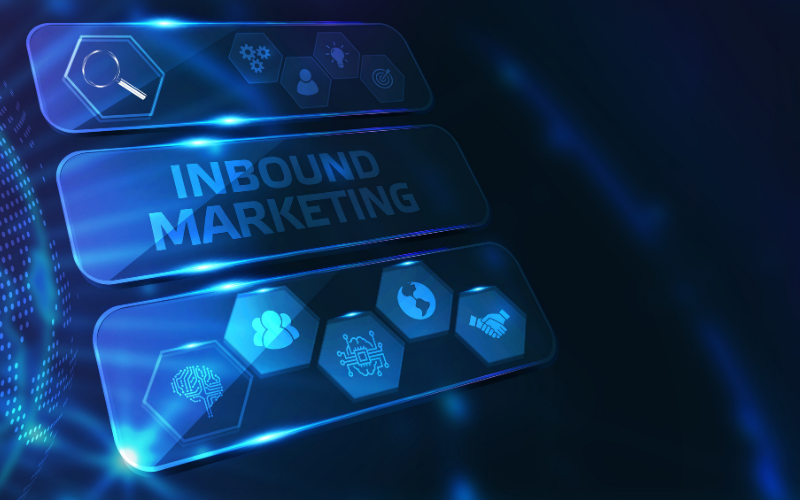Inbound marketing is a tool that serves to attract potential customers through the creation of useful, relevant, and contextual content to address the prospect's needs. The buyer persona is in a buying process where the first thing they do is research their needs, find out what the industry offers, and identify companies that manufacture the product. This methodology is attractive to customers because the provided content is educational and entertaining. It is more objective than traditional marketing, which constantly bombards their inbox with unnecessary information without prior notice. In this case, they are the ones who make the final decision about the content.
By aligning the content you publish with the interests of your customers, you organically attract incoming traffic that you can later convert, close, and delight over time. The good thing about implementing inbound marketing strategies in your company is that it consists of entirely organic leads, so you don't need to invest to make your business visible to different prospects.
Inbound Marketing Strategies
These strategies will help you reach a larger target audience:
- Attraction
In this stage, the strategy consists of attracting potential customers and introducing them to your company and value proposition. This involves creating content that provides value and ensuring that it reaches your audience in the best possible way. By focusing on inbound marketing with a more targeted and cost-effective advertising spend, your business can save money and experience a higher ROI over time.
Things to consider when implementing this strategy:
Content creation: Creating interesting content and promoting it through the appropriate channels is the most effective way to attract potential customers. This can be achieved through blogs, videos, case studies, ebooks, manuals, among others. In addition to creating great content, keyword research using SEO search engines and the natural incorporation of those keywords into the content should be done.
Social media sharing and engagement: Sharing and engaging with different promotional content on social media is essential for maximizing the visibility of your inbound marketing strategy, given that we are currently in the digital age.
- Engagement
In this stage, you obtain the contact information of users to interact with them and provide solutions to their problems. The goal is to show them why they should do business with you.
Here are some tactics used to convert leads into potential customers:
Landing pages: The landing page is what a potential customer sees when they click on your ad or link. It should contain relevant text focusing on your value proposition and offering something in return, such as a free trial or ebook, to encourage users to register through a call-to-action (CTA) and provide their personal information.
Use registration forms to collect information from your leads, such as their name, email address , and phone number. It is ideal to request key information to capture their attention. To optimize conversions, ensure that your form is easy to complete.
A call-to-action (CTA) is a visual way to convince visitors to take clear and immediate action. Make sure your CTA is relevant to the text and the destination. In the following example, the CTA encourages visitors to discover a healthy salad recipe book. The goal in this case is to collect their personal information, but in return, provide them with a recipe book, creating a win-win situation.
A lead nurturing sequence involves sending personalized email sequences based on behavioral data, such as the pages the lead has visited, what they have subscribed to, or what they have read.
Email marketing: When users subscribe to your email list, they want to learn more about your business. Your job is to find out what they are looking for and convince them that the answer lies in your company. Additionally, you can share customer testimonials or encourage them to follow your social media channels.
Use CRM and marketing automation software to manage your leads. Create automated email workflows, review detailed information about your leads, and analyze your company's performance. All of this will help you communicate with potential customers in the best possible way to provide exceptional experiences.
- Delight
In this stage, the customer has made the final decision, but it's not just about acquiring customers. It's about making your customers so happy that they become promoters of your business. The more you satisfy your customers, the more likely they are to leave positive reviews and speak positively about your business to others. The goal of this stage is ultimately to attract more visitors and potential customers to your business.
Here's how companies can delight their customers:
Live events and webinars: Live events and webinars are a great way to engage with your customers and keep them up to date with the latest news and updates from your company. You can host them through different channels such as Zoom, Facebook Live, Instagram, Microsoft Teams, Google Meet, among others.
Customer support: Offering excellent customer service is crucial for keeping customers happy and satisfied with your business. Make sure to address their concerns in a timely manner. You can use chatbots to provide service at any time of the day, even if they can only handle basic questions. You can also create educational videos that your customers can review and benefit from.
Surveys: If your customers are not leaving reviews on their own, don't hesitate to ask for feedback. Reach out via email, SMS, Facebook or Instagram Messenger, and other channels to gather their thoughts on how to improve your services for their benefit.
Support: If you want to delight and assist your potential customers, you need to provide them with the right and accurate information at the right time. But beyond responding in a timely manner, what really matters is that the information is helpful and aids in solving their problem. Therefore, you should focus on creating useful articles that form a knowledge base for users to refer to and share accordingly.
In conclusion, implementing different inbound marketing strategies requires strong teamwork from all areas of your company. It is not solely the responsibility of the marketing department to develop them. When everyone is focused on the same purpose, providing extraordinary service becomes much easier.





